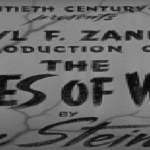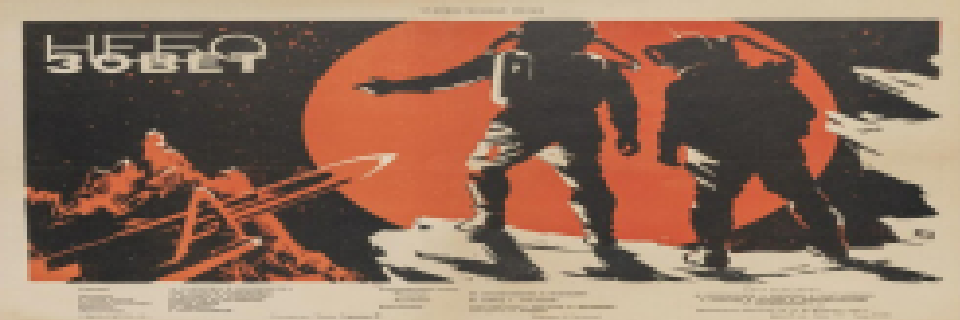Battle Beyond the Sun, a 1959 science fiction film originally produced in the Soviet Union under the title Nebo Zovyot (translated as The Sky Calls), was later heavily edited and re-released in the United States by Roger Corman for an English-speaking audience. The American version, credited to director Francis Ford Coppola under the pseudonym Thomas Colchart, underwent a transformation in narrative and visual effects to align more closely with the Cold War sensibilities of the time. Though it retained the foundation of its original Soviet story, the film became a hybrid of two ideologically distinct cinematic visions. This blend of cultures and contexts created an unusual, if not entirely cohesive, film experience.
Set in a futuristic 21st century where space travel has become a global priority, the film follows two rival factions engaged in a race to Mars. In the American version, the countries are no longer the USSR and USA, as in the original, but instead two fictitious superpowers named North Hemis and South Hemis, likely a strategic move to avoid overt political commentary. These factions are striving to achieve a first landing on the red planet, symbolising a broader competition for technological supremacy. The film opens with an atmosphere of quiet urgency, depicting the tension and ambition surrounding interplanetary exploration.
The North Hemis crew is led by the capable and idealistic scientist Dr. Martin, who spearheads a mission designed to be a peaceful and cooperative scientific venture. Meanwhile, the South Hemis side, more secretive and competitive in its methods, prepares its own expedition with far less transparency. The narrative tension increases as both missions face technical setbacks, political pressure and moral questions. A key plot point arises when the South Hemis crew launches their rocket prematurely, hoping to beat their rivals and claim the prestige of the first Mars landing.
This decision leads to a catastrophic failure. The South Hemis ship veers off course and faces destruction, prompting a rescue mission from North Hemis. Dr. Martin, prioritising human life over political rivalries, diverts his own mission to save the stranded crew. This act of compassion introduces the film’s central moral: that the pursuit of scientific progress should transcend geopolitical divides. The rescue sequence is one of the more compelling moments in the film, as it reflects both the dangers of space travel and the idealism that space exploration can inspire.
The film’s visual style reflects the era in which it was produced. Though dated by today’s standards, its use of practical effects, miniature models and matte paintings was impressive for the time, particularly in the original Soviet version. The re-edited American version, however, added bizarre alien creatures and other fantastical elements that were not present in the original film. These additions were poorly integrated and have become infamous among science fiction fans for their unconvincing and sometimes laughable execution. One scene, for instance, features two rubbery space monsters fighting on a Martian landscape, a sequence added entirely for the benefit of American audiences, despite having no logical connection to the plot. This shift in tone from cerebral to sensational undermined the film’s original thematic coherence.
Character development in the film is relatively thin, in part because of the language dubbing and re-editing, which removed or altered many of the more nuanced interactions. Nevertheless, Dr. Martin emerges as a recognisable archetype: the rational, ethical scientist who values human dignity over national pride. His decisions are portrayed as morally sound, though perhaps overly idealistic in the face of political rivalry. The South Hemis crew, by contrast, are less developed and mostly serve as narrative devices to reflect the dangers of reckless ambition.
Despite its shortcomings, Battle Beyond the Sun retains historical value, particularly as a relic of Cold War cinema. It reveals how science fiction was used by both the Soviet Union and the United States to project cultural ideals and anxieties about the future. In the Soviet version, there is a sense of collective responsibility and the triumph of reasoned cooperation. In the American edit, while some of this remains, it is diluted by the insertion of sensational elements and a less consistent tone. The difference between the two versions offers a rare glimpse into how film can be reshaped by ideology and audience expectations.
One cannot ignore the implications of the re-editing process itself. Coppola, then an emerging filmmaker, was tasked with transforming a Soviet story into something palatable for American viewers during an era of fierce propaganda. The fact that the film was repackaged at all speaks volumes about the influence of politics on art. It also reflects the entrepreneurial nature of American independent cinema during the 1960s, where foreign films were often bought cheaply, re-dubbed, and re-cut for profit. This commercial practice sometimes led to odd and disjointed results, as is the case here.
From a modern perspective, Battle Beyond the Sun may seem like a kitschy curiosity, more memorable for its production history than its plot. Yet underneath the rubber monsters and stilted dubbing lies a core message about unity, sacrifice and the shared potential of humanity when reaching for the stars. Even in its compromised form, the film hints at a vision of the future where science and cooperation take precedence over competition and conflict. This idealism may seem naïve today, but it represents a powerful contrast to the often cynical portrayals of space exploration in contemporary media.
In summary, Battle Beyond the Sun is a film caught between two worlds—literally and metaphorically. Its Soviet roots are evident in its pacing, tone and moral compass, while the American edit imposes a layer of spectacle and absurdity that detracts from its original purpose. The resulting work is uneven but fascinating, a cinematic artefact that mirrors the ideological tensions of its time. It offers both a cautionary tale about the dangers of politicising science and a hopeful glimpse into what humanity might achieve when it chooses collaboration over rivalry. Though not a masterpiece by traditional standards, it remains a unique entry in the canon of early science fiction cinema.







